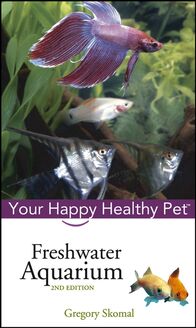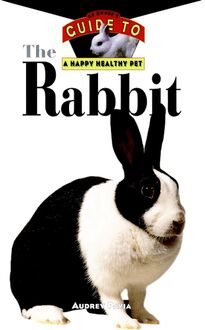-
 Univers
Univers
-
 Ebooks
Ebooks
-
 Livres audio
Livres audio
-
 Presse
Presse
-
 Podcasts
Podcasts
-
 BD
BD
-
 Documents
Documents
-
- Cours
- Révisions
- Ressources pédagogiques
- Sciences de l’éducation
- Manuels scolaires
- Langues
- Travaux de classe
- Annales de BEP
- Etudes supérieures
- Maternelle et primaire
- Fiches de lecture
- Orientation scolaire
- Méthodologie
- Corrigés de devoir
- Annales d’examens et concours
- Annales du bac
- Annales du brevet
- Rapports de stage
La lecture à portée de main
Vous pourrez modifier la taille du texte de cet ouvrage
Découvre YouScribe en t'inscrivant gratuitement
Je m'inscrisDécouvre YouScribe en t'inscrivant gratuitement
Je m'inscrisEn savoir plus
Vous pourrez modifier la taille du texte de cet ouvrage
En savoir plus

Description
PART ONE: All About Discus.
1. The King of the Amazon.
2. Discus Basics and Behavior.
PART TWO: Setting Up the Discus Aquarium.
3. The Aquarium and Its Components.
4. Understanding Equipment.
5. Aquarium Water.
6. Plants, Substrate and Accessories.
PART THREE: Caring for Discus.
7. Bringing Your Discus Home.
8. Feeding Your Discus.
9. Keeping Discus Healthy.
PART FOUR: Beyond the Basics.
10. The Basics of Breeding.
11. Resources.
Sujets
Informations
| Publié par | Turner Publishing Company |
| Date de parution | 21 avril 2008 |
| Nombre de lectures | 0 |
| EAN13 | 9780470335314 |
| Langue | English |
| Poids de l'ouvrage | 2 Mo |
Informations légales : prix de location à la page 0,0650€. Cette information est donnée uniquement à titre indicatif conformément à la législation en vigueur.
Extrait
The
Discus
Howell Book House
IDG Books Worldwide, Inc.
An International Data Group Company
919 E. Hillsdale Boulevard
Suite 400
Foster City, CA 94404
Copyright 2000 text by Howell Book House , a wholly owned subsidiary of IDG Books Worldwide, Inc.
Copyright 2000 photography by Aaron Norman
All rights reserved. No part of this book may be reproduced or transmitted in any form or by any means, electronic or mechanical, including photocopying, recording, or by an information storage and retrieval system, without permission in writing from the Publisher.
Howell Book House is a registered trademark of Macmillan General Reference USA, Inc., a wholly owned subsidiary of IDG Books Worldwide, Inc.
The IDG Books Worldwide logo is a registered trademark under exclusive license to IDG Books Worldwide, Inc., from International Data Group, Inc.
For general information on IDG Books Worldwide s books in the U.S., please call our Consumer Customer Service department at 800-762-2974. For reseller information, including discounts and premium sales, please call our Reseller Customer Service department at 800-434-3422.
Library of Congress Cataloging-in-Publication Data
Hargrove, Mic.
The discus : an owner s guide to happy healthy fish / [Mic Hargrove, Maddy
Hargrove, David Brown].
p. cm.
Includes bibliographical references.
ISBN: 1-58245-112-5
1. Discus (Fish) I. Hargrove, Maddy. II. Brown, David. III. Title.
SF458.D5H27 1999
639.3'774-dc21 99-34072
CIP
Manufactured in the United States of America
10 9 8 7 6 5 4 3 2 1
Series Director: Amanda Pisani, Nikki Moustaki
Book Design: Michele Laseau
Cover Design: Iris Jeromnimon
Illustration: Laura Robbins
Photography: All photography, including front and back cover, by Aaron Norman Production Team: Linda Quigley, Holly Wittenberg, Donna Wright
The fishes photographed for this book were provided by Victor Hritz of the Crystal Aquarium, Marc Weiss of World Wide Fish Farms, William Appel and David Weber.
Contents
part one
All About Discus
1 The King of the Amazon
2 Discus Basics and Behavior
part two
Setting Up the Discus Aquarium
3 The Aquarium and Its Components
4 Understanding Equipment
5 Aquarium Water
6 Plants, Substrate and Accessories
part three
Caring for Discus
7 Bringing Your Discus Home
8 Feeding Your Discus
9 Keeping Discus Healthy
part four
Beyond the Basics
10 The Basics of Breeding
11 Resources
part one
chapter 1
The King of the Amazon
I can think of no greater joy than owning an aquarium. Tropical fish lend a special healing power to the everyday problems and stress that we all have to manage. An aquarium is therapeutic, educational and fun. Although all aquarium fish are beautiful and interesting in their own right, once in a while a certain species comes along and completely captures our imagination and desire.
Love at First Sight
I cannot truly describe the enchantment that I felt when I first laid eyes upon a discus. Its large dancing eyes captured my heart and enthralled me to no end. I knew at that moment, that I just had to have one of these beautiful and graceful fish in my home aquarium. A discus is very similar in nature to a family s dog. This species of fish will recognize its owner and swim joyfully to the surface to help him greet the beginning of each new day. Fascinating moments like these make aquarium keeping one of the most popular and most cherished hobbies in the world.
The King of the Amazon
Many consider the discus to be the undisputed king of all tropical aquarium fish. Few other fish display the natural beauty, amazing color variations and unique personality traits that discus do. Many hobbyists have developed discus fever and have quickly formed a lifelong association with this beautiful member of the cichlid family.
Over the years, discus have acquired an unjustified reputation for being difficult to maintain and breed in the home aquarium. But, as with many other types of tropical fish, lack of knowledge concerning a particular aquatic animal s housing requirements has led to quite a bit of misinformation on their care. Once you understand the discus natural environment, history, water requirements, diet and breeding habits, you ll have the knowledge to successfully keep this species healthy in a home aquarium, and to develop a long relationship with one of the most beautiful and fascinating fish on earth.
Natural Environment
Discus are native to the Colombian, Peruvian, Brazilian and Venezuelan regions of South America. Research has shown that discus seem to live in very close proximity to the Amazon River. Discus tend to reside in family groups that do not stray far from their immediate surroundings. Within these groups, individual discus bear a strong resemblance to each other. A family of discus that is living nearby will be quite different in appearance from their neighbors.
P EACE AND Q UIET
The natural habitat for discus consists of rivers and lakes such as the Urubu River in Brazil, which has slow-moving waters. These native waters tend to be very soft, murky and shallow. Discus are docile and shy, and will spend most of their day lingering beneath large rocks, submerged tree limbs and logs. The cooler temperatures in these shady, sunken areas are a lifesaver during the hottest part of the day.
Collection
Aborigines refer to the discus as Acara Discu, and it is used extensively as a food staple in their diet. Natives often poison small areas of a river or stream. They do so using timbo (raw rotenone, a substance obtained from the roots of certain tropical plants) and will then gather dead discus and other fish in their nets as they float to the top of the water. Discus are not considered a delicacy by the natives, as their bodies are thin and bony and do not provide much meat.
Collection of discus by local villagers for transport to aquarium hobbyists do not always yield large amounts of surviving specimens. Vast numbers of discus die during the collection and transportation process because of rough handling, poor water conditions, stress and shock. Only a small number of discus survive long enough to become acclimated to dealer and hobbyist tanks.
Wild-caught discus are available to hobbyists, but being trapped and transported is very stressful for the fish .
C APTURING M ETHODS
Collection of live discus is not an easy task. Often these fish must be netted one by one as they hide among the tangled tree branches and logs. Villagers and aquatic collectors often jump up and down on top of partially submerged fallen trees and shake them roughly in an attempt to frighten the discus out into the open where they can be easily netted. After dark, villagers will also blind the discus with a bright light and then net them before they are able to escape.
POPULAR DISCUS STRAINS
There are so many beautiful discus from which to choose. Some of the more popular strains include: Turquoise discus Marlboro Red Hi Fin Blue Tangerine discus Blue Cobalt
Another common method of catching discus is to encircle a submerged tree with a large net. Next, the villagers will climb into the water and cut up the tree with an ax. The tree limbs are removed from the area, and then the net is drawn in at the center to trap the discus. One of the disadvantages of this capture method is that much of the natural environment is destroyed during the process. Large numbers of discus are often removed during a single net capture. Until the commercial breeding industry began offering discus in large quantities a few years ago, the natural breeding populations were in danger of extinction.
With the help of commercial hatcheries around the world, discus are now being bred in a wide variety of beautiful colors. Fancy new strains have almost eliminated most of the public s demand for the dull brown and pale green varieties found in the Amazon region.
History of the Discus Hobby
In 1840, discus were first discovered by a Viennese ichthyologist named Dr. Johann Jacob Heckel. Shortly after its arrival in Europe, the discus became known by the popular name of pompadour fish or brown discus. Heckel shipped the first discus specimens in 55-gallon drums to Germany via a dirigible. Unfortunately, many of his new and rare acquisitions died during transport due to unsuitable shipping conditions and the overall length of their journey.
The discus was introduced into the aquarium hobby in 1933. After the discus made its grand appearance, it slowly began to work its way into the hands of hobbyists who longed to breed this remarkable fish. In 1949, W.T. Dodd began the first successful breeding program of discus in large quantities. Several years later, commercial organizations in Hong Kong, Singapore and Bangkok began breeding discus in large hatcheries to provide numerous species available to the public.
Another pioneer in discus breeding was Danny Dicoco, who successfully hybridized discus fish in many different combinations. From 1956 through 1966, Dicoco supplied the New York market with tank-bred discus. Dr. Eduard Schmidt, a German gynecologist, was another contributor to the new and exciting field of discus breeding. He bred massive quantities of discus to supply other dealers and hobbyists. A few years later while on an expedition, Dr. Herbert Axelrod and Harald Schultz brought back a wild Lake Tefe green discus named Symphysodon aequifasciata aequifasciata , which ultimately became the cornerstone for discus breeding in later years.
The blue discus , Symphysodon aequifasciata haraldi, was first available to hobbyists in the 1960s .
S UPPLY AND D EMAND
In 1960, other species of discus began to make their appearance in the aquarium hobby. Limited selections of the Symphysodon aequifasciata aequifasciata or Green discus, the Symphysodon aequifasciata haraldi or Blue discus and the Symphysodon discus also known as the Heckel or native discus were consistently being made availab
-
 Univers
Univers
-
 Ebooks
Ebooks
-
 Livres audio
Livres audio
-
 Presse
Presse
-
 Podcasts
Podcasts
-
 BD
BD
-
 Documents
Documents
-
Jeunesse
-
Littérature
-
Ressources professionnelles
-
Santé et bien-être
-
Savoirs
-
Education
-
Loisirs et hobbies
-
Art, musique et cinéma
-
Actualité et débat de société
-
Jeunesse
-
Littérature
-
Ressources professionnelles
-
Santé et bien-être
-
Savoirs
-
Education
-
Loisirs et hobbies
-
Art, musique et cinéma
-
Actualité et débat de société
-
Actualités
-
Lifestyle
-
Presse jeunesse
-
Presse professionnelle
-
Pratique
-
Presse sportive
-
Presse internationale
-
Culture & Médias
-
Action et Aventures
-
Science-fiction et Fantasy
-
Société
-
Jeunesse
-
Littérature
-
Ressources professionnelles
-
Santé et bien-être
-
Savoirs
-
Education
-
Loisirs et hobbies
-
Art, musique et cinéma
-
Actualité et débat de société
- Cours
- Révisions
- Ressources pédagogiques
- Sciences de l’éducation
- Manuels scolaires
- Langues
- Travaux de classe
- Annales de BEP
- Etudes supérieures
- Maternelle et primaire
- Fiches de lecture
- Orientation scolaire
- Méthodologie
- Corrigés de devoir
- Annales d’examens et concours
- Annales du bac
- Annales du brevet
- Rapports de stage




















